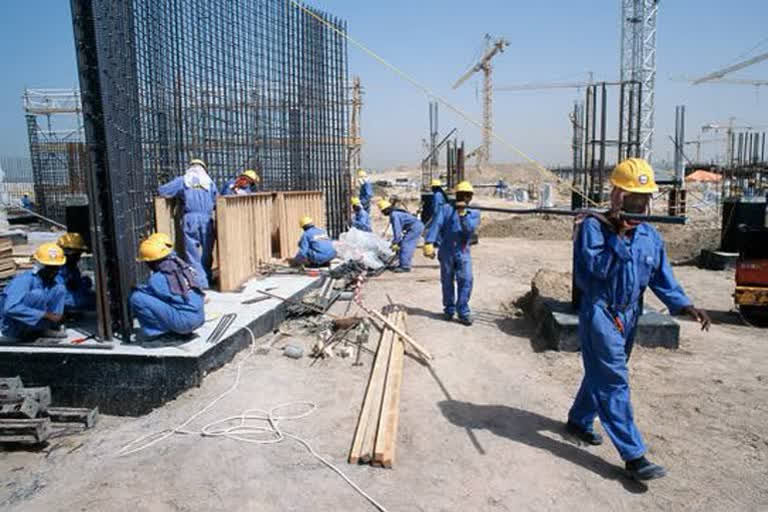Hyderabad: Last year when India was reeling under the first wave of Covid-19, the country suffered a huge toll in terms of lives and livelihoods. The employment and output also dipped to new lows with the lockdown induced to curb the rising infections. On May 13, 2020, the ruling dispensation had come out with a massive ‘Aatma Nirbhar Package’ of Rs.20 lakh crore in order to ease the economic suffering of the country.
Basically, it was a combination of measures assuring liquidity by making enough cash available in the banking system and providing government guarantees to the loans that banks provide to a variety of stakeholders from MSMEs to street hawkers. On one hand, key reforms related to agriculture, industry and ease of doing business were brought forward besides focusing upon agricultural infrastructure. On the other hand, the entry of private sector in PSUs was also made further easy.
However the signs of recovery that were seen in the early stages, soon vanished, even before the benefits of the package could take off. The second wave of Covid-19 struck the country with a far higher magnitude and scale, inflicting a huge death toll and unprecedented infections in the country. Indian economy faced the biggest contraction since 1952.
Read: Rising Cases Of The Black Fungal Infection In India
Experts across the world are cutting down their forecasts for the current fiscal year. While S&P Global Ratings, slashed its prediction to 9.8 percent from 11 percent earlier, the Fitch Solutions sees the economy expanding by 9.5%, a projection that’s below the Bloomberg consensus of around 11 percent.
These lower forecasts are due to the rising unemployment, and more importantly, dwindling savings in the economy. With the worst in waiting in the second wave of Covid-19 and a probability of a third wave to hit the country again, we are going through the toughest times in the history of Independent India.
Exactly after one year, we are again in the same position as we were a year ago. Once the caseload falls, there will be again calls for another ‘package’ to revive the economy. In this context, it is pertinent to rethink our idea of ‘Aatma Nirbhar Bharath’, as the country is facing tougher challenges that need to be addressed at the earliest. When it comes to the Aatma Nirbhar package, it largely focused on offering loans, rather than providing them direct support in terms of subsidies on some of their fixed costs.
It is to be noted in this context that businesses normally go for a loan if they have enough confidence that it would flourish and its expected returns should be at least equal or higher than the interest paid on the loan, in a worst-case. At a time when uncertainty is looming over the economy, consumption of goods and services will tend to fall. At this point of time, contemplating any other package to revive the economy needs to identify the challenges we face and design the policies accordingly.
The Challenges
The first and foremost challenge at hand is reviving the consumption demand in the economy. A falling demand results in low output and thus induces unemployment. With most of the states under Covid-19 restrictions, the fall in demand is going to increase, which means a larger loss in output and employment.
The second challenge is dealing with the income inequalities that would further deepen and widen after the Covid-19 second wave. There would be a rise in inequalities, as the ability to cope up with the pandemic and income effects induced by it are different to different sections of the society.
While the working class lost jobs and their savings dwindled, few corporates flourished at the same time, which we saw during and after the first wave. The same would repeat once the second wave subsides if the necessary measures are not taken swiftly. The third challenge is the stagnation in rural wages and the decline in rural demand, which is a key to India’s industrial growth, particularly MSMEs.
Given the fact that the agriculture and MSME sector jointly feeds nearly 80 percent of the country’s workforce, their revival is key for the economy to bounce back.
The Way Ahead
In order to revive the consumption demand, going for a huge fiscal stimulus, (not ‘loans’) is the policy choice we have for better results. Increased public expenditure that provides work for the unemployed, providing input subsidies to farmers, fiscal incentives and meeting out a part of the fixed cost requirements of the small retail businesses and MSMEs could be a part of this ‘stimulus’.
There is also a need to make large-scale allocations for MNREGS and the agricultural sector, which could boost rural demand, which in turn will accelerate the demand growth very much needed at this point of time. In order to reduce the income inequalities, the policy of providing wage subsidies to the employers on both existing employees and the new recruitments may be considered for a specified period of time.
Such an initiative would avoid job losses and ensures stable incomes to the workforce during the pandemic, which could prevent the income inequalities from rising. There is a need to further increase the cash transfers to the poor and vulnerable as they spend maximum share of their incomes to meet their daily needs and it improves consumer demand.
This revives both Agriculture and MSME sector, which in turn provides incomes and then gives a boost to consumption. Thus the task at hand is to help these segments with fiscal measures, to help the economy to revive.
The problem of fiscal deficit will surely arise. But it may not be bigger than the question of lives and livelihoods of majority Indians. The country now needs a lifeline. Once it recovers, it could become ‘self- reliant’ and rise again.



